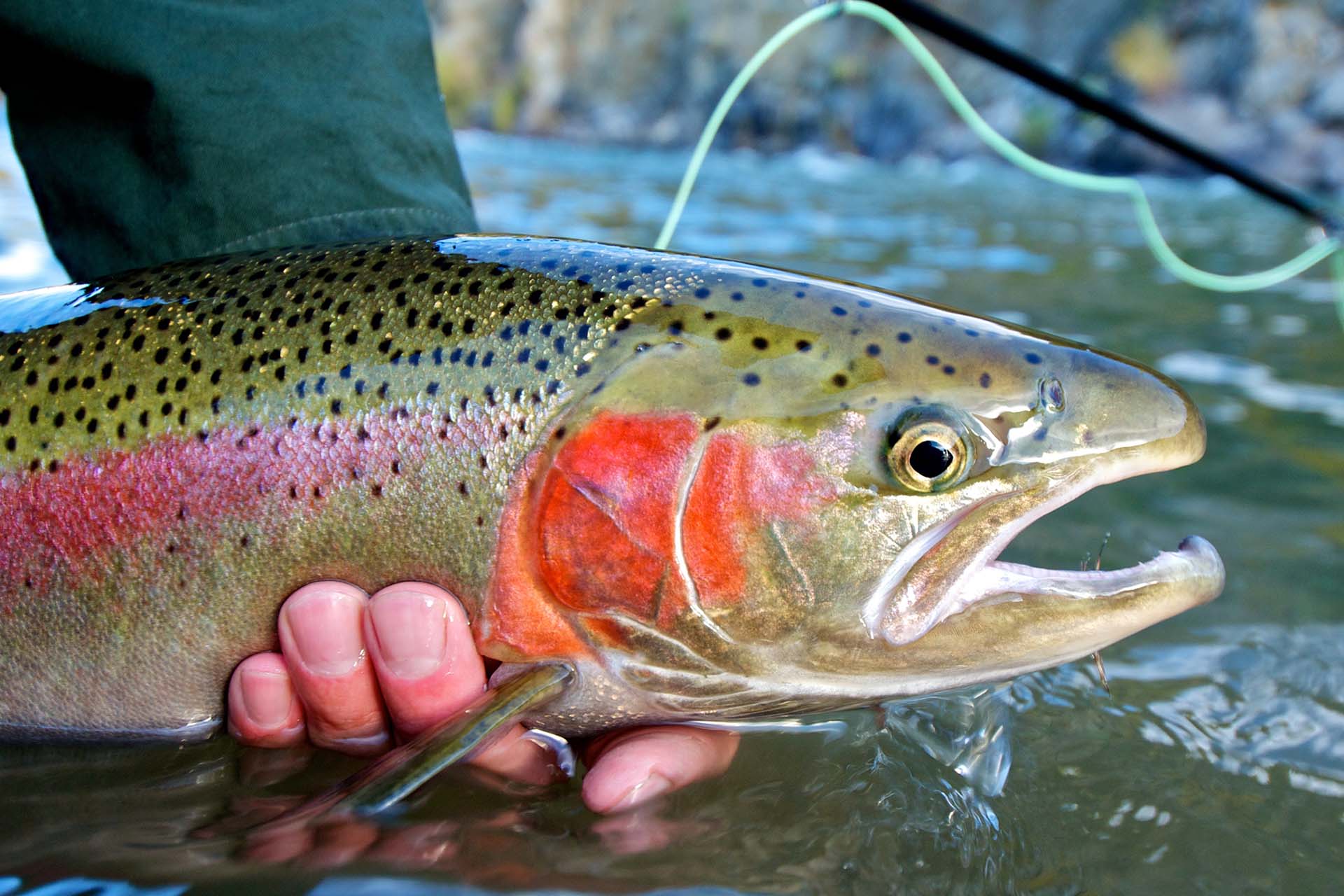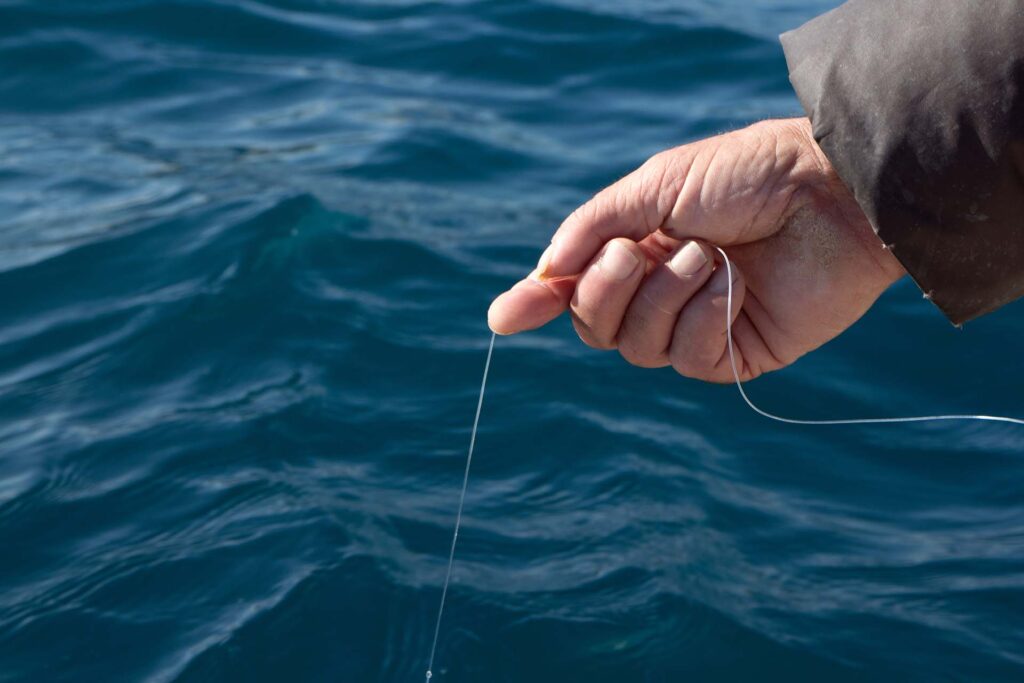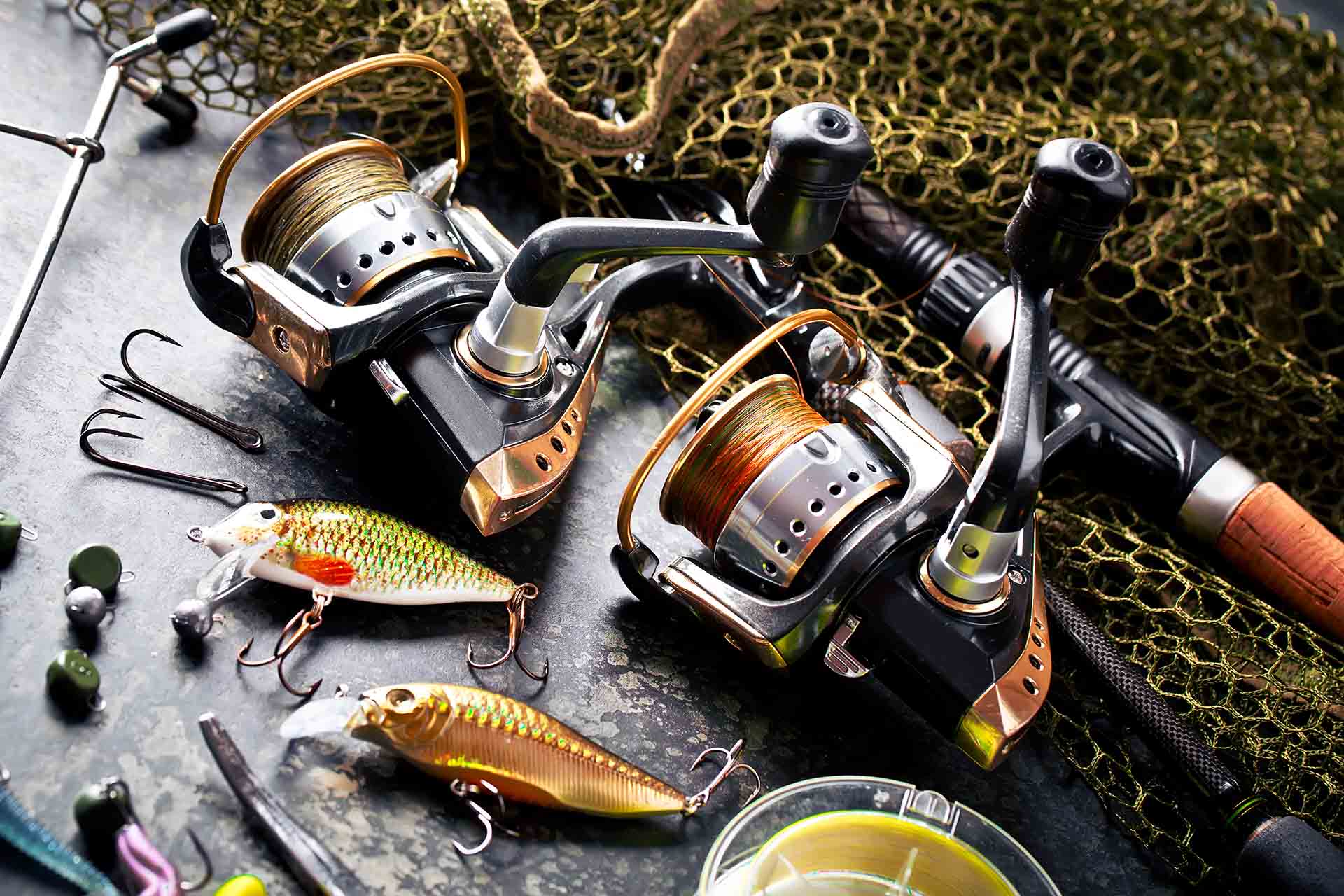Coming up with the perfect fishing gear setup takes a lot of trial and error. The choices seem endless for fishing reels alone. However, if you’ve managed to narrow it down to Okuma Ceymar C-30 vs. Okuma Ceymar C-10, let’s see which spinning reel comes out on top as the better option for you.
No Fishing Gear Setup Is Complete Without the Right Type of Reel
Any beginner fisherman can easily get overwhelmed by the number of different types of fishing. From simple casting methods to more sophisticated ones, such as nymph fly fishing, this outdoor activity encompasses so many different techniques.
Moreover, the situation doesn’t get any easier once it’s time to gather the right equipment. That’s because there are many choices – not only do you need to get different parts of gear, but each comes with its own range of shapes and sizes. In that regard, fishing reels are no different, and it takes time to figure out the right choice for you.
There’s No Such Thing as the Perfect Fishing Reel Fit for Any Circumstance
The reason why it takes so much time and effort to create the setup that works perfectly for you is the simple fact that there are no one-size-fits-all gear options. From the fishing hook submerged in water to the fishing rod in your hand, choosing the right pieces comes down to the style of fishing you’re interested in.
Besides the technique, here are a couple of factors that should be considered when shopping for a new fishing reel:
- Your level of experience – some reels have a simple and basic design which makes them a good choice for beginners, while others are more difficult to get the hang of,
- Other pieces of gear you have – even the best-quality equipment doesn’t amount to much if it’s not matched well with other pieces,
- How much you’re willing to spend – it’s important to figure out your priority between affordability and durability of the gear.
The Three Main Types of Fishing Reels – Spincast, Spinning, and Baitcast
When it comes to fishing reels, there are three main types you can choose from. There’s the simply designed spincast reel, which is a favorite choice of beginner anglers, but also a common sight among the gear of even the more seasoned veterans.
Then there’s the baitcasting reel, which is a bit more advanced as it has a lot more moving parts than the other types. But, if your search is narrowed down to the Okuma Ceymar C-10 vs. C-30, the decision has already been made – you’re interested in expanding your gear setup with a spinning reel.
The Spinning Reel Is the Most Popular Choice Among Anglers of All Experience Levels
The spinning reel is the most common part of any fisherman’s setup, no matter the experience level. That’s because they’re much more efficient and durable than the simpler spincast reel while still maintaining a straightforward design that’s easy to get the hang of.
Spinning Reels Are Quite Versatile and Easy to Cast With
This type of reel is quite easy to recognize as they’re connected to the fishing rod from below. This design offers balanced handling because you’re holding the equipment in a natural position.
Spinning reels are also pretty versatile – from smaller baits to bigger catches, they can work great in a number of different fishing circumstances. Combined with the right kind of fishing line, a spinning reel can produce quite a bit of pulling power, and they usually have an impressive range as well. When you factor in their affordability, it’s easy to understand why this type of reel is so popular.
Okuma Fishing Tackle Co. Is a Well-Known Name Among Fishing Equipment Manufacturers
One well-known manufacturer that keeps the standard of affordability for all their gear is the Okuma Fishing Tackle Co. This company offers a wide range of different reels and other equipment, and their products are especially alluring because of their low-price ranges.
Based out of Taiwan, Okuma has been manufacturing quality gear for both freshwater and saltwater fishing for almost 30 years now. The Okuma Ceymar reel is probably one of their most popular options for a couple of reasons, from quality design to affordable price. So, without further ado, let’s figure out which model is the right choice for you.

Okuma Ceymar C-30 vs. Okuma Ceymar C-10 – Main Specifications Comparison
Before I get into the detailed comparison of their main aspects, let’s take a look at the main specifications of these sister reels:
| Okuma Ceymar Model | C-10 | C-30 |
|---|---|---|
| Gear Ratio | 5:1 | 5:1 |
| Line Retrieve | 21 in | 25 in |
| Mono Line Capacity | 2/210, 4/110, 6/70 lbs/yds | 4/300, 6/185, 8/145 lbs/yds |
| Max Drag Ability | 5 lbs | 13 lbs |
| Weight | 6.0 ozs | 8.2 ozs |
| Ball Bearings | 6BB+1RB | 7BB+1RB |
| Hand Orientation | Ambidextrous | Ambidextrous |
| Average Price | $40-$60 | $40-$60 |
The Okuma Ceymar Is a Lightweight Reel With a Pretty Straightforward and Smart Design
In the long-standing tradition of Okuma, the Ceymar delivers an ultra-lightweight design that’s quite precise and accurate when it gets to work. It’s available in several sizes, all in an attractive red-on-black styling – C-10, C-20, C-30, C-40, C-55, and C-65 – the higher the number, the more capable the reel.
This Reel Offers a Compact Design That Is Both Strong and Durable
Thanks to a couple of decades of experience, the Okuma Ceymar reel is quite well manufactured and offers a durable, compact design. Here are the materials used for this piece of gear:
- The reel body is made out of graphite,
- The handle is made from forged aluminum,
- The bail wire is made from solid, heavy-duty aluminum,
- The spool is 2-tone anodized machined aluminum.
Both the Design and the Materials Used Work Together to Create Corrosion Resistance
The Okuma Ceymar works pretty well in all fishing and weather conditions because it’s quite resistant to the process of corrosion. That’s partly due to the materials used and partly because of the smart design known as the Cyclonic Flow Rotor.
Basically, with this type of engineering, the airflow is created throughout the internal gearing, and thanks to that, the reel is able to eliminate moisture and dry up faster. Every experienced angler knows just how much this anti-corrosion aspect is important for any part of your fishing equipment.
The Lightweight Design Offers Pretty Comfortable Handling
As mentioned, all sizes of the Okuma Ceymar are pretty lightweight, which means it’s fairly easy and comfortable to maneuver. However, it’s good to keep in mind that your gear being so light can have its downsides – if you’re casting in windy conditions, balancing issues can occur.
When it comes to comfortability, both the C-10 and the C-30 are great choices thanks to their black anodized handle and ambidextrous design. The non-slip EVA handle knobs are added for comfort and better grip. While the larger sizes, such as the C-65, offer advanced handling with an ergo grip feature, the smaller sizes can be just as comfortable to maneuver in most circumstances.
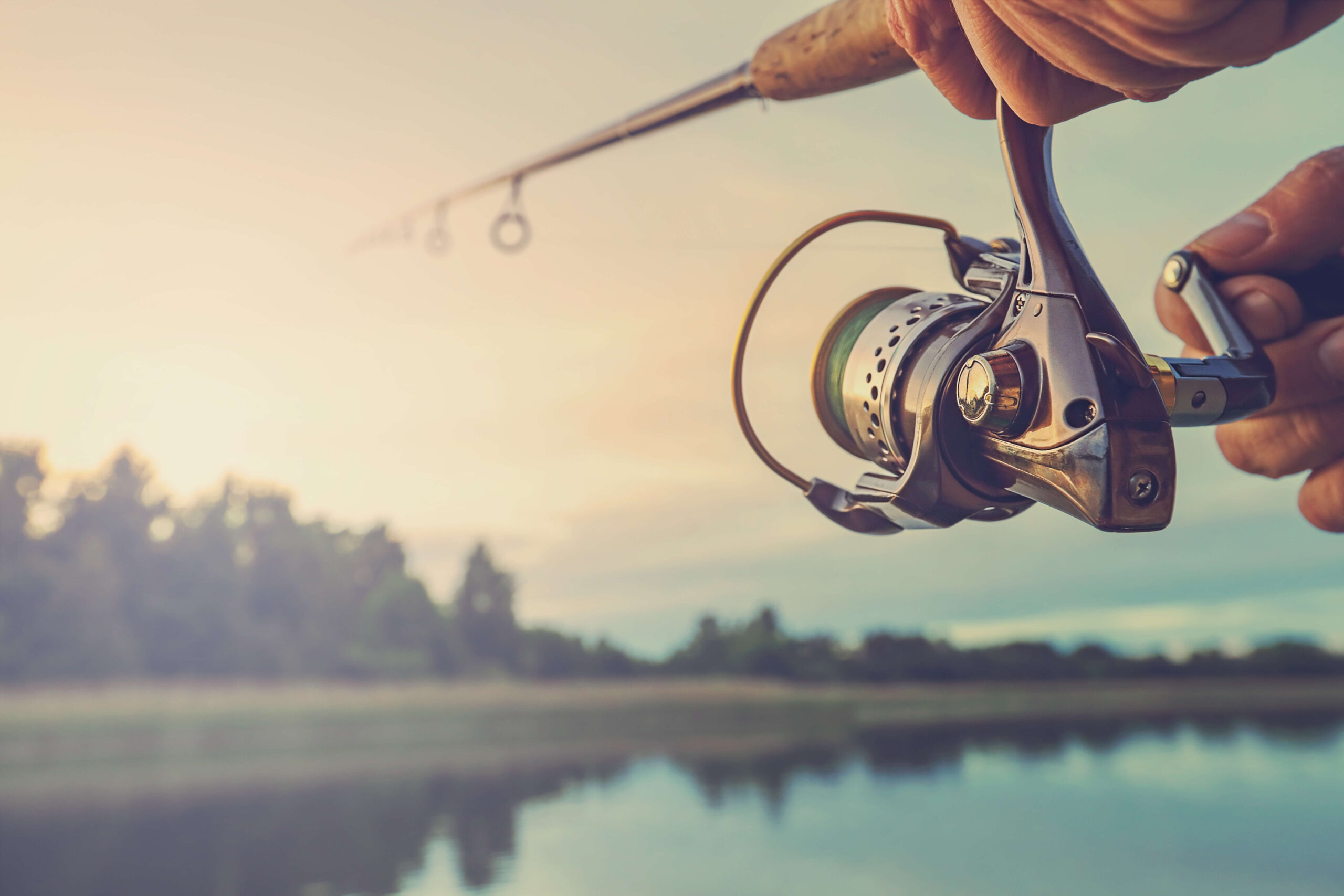
Both the Ceymar C-10 and the C-30 Have a Slow 5:1 Gear Ratio
While the lightweight and ambidextrous design offers comfortable and easy handling, it’s important to underline that these reels have a low gear ratio of about 5:1. That means the C-10 and the C-30 won’t perform well if you’re planning to use a fast-moving lure when tying your fish hook.
A Lower Gear Ratio Should Be Used for Bigger Baits That Do a Lot of Pulling
While slower reels with a low gear ratio, such as the 5:1, have their disadvantages, they also have the highest torque, which allows less effort when you’re retrieving the catch. However, that’s possible only when you attach bigger baits to your store-bought or DIY fishing hook, such as the deep-diving crankbaits, big swimbaits, and slow-rolled spinnerbaits.
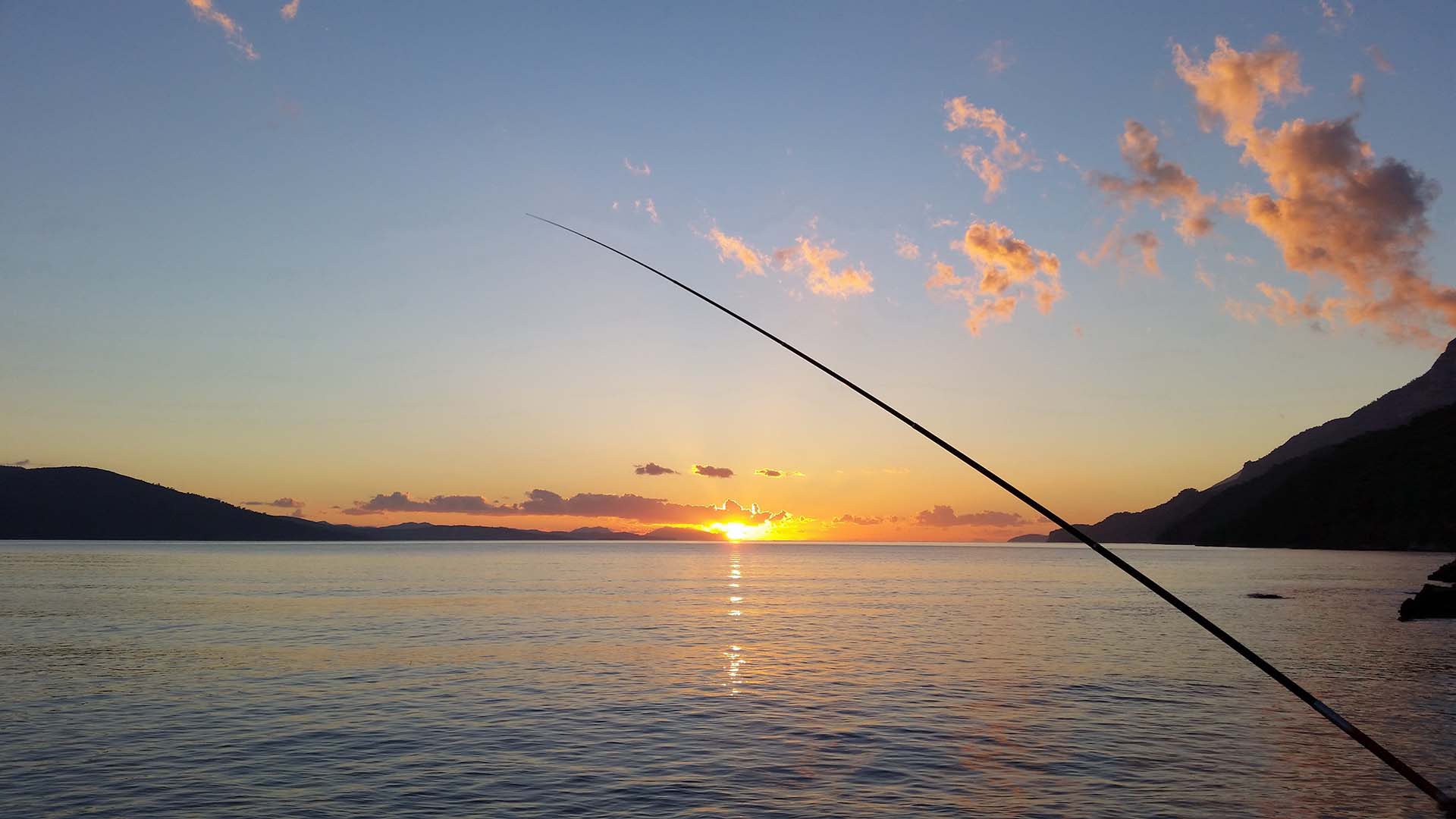
A Head-To-Head Comparison of Different Performance Aspects Between the Ceymar C-10 and the C-30
Reels have numerous specifications every angler needs to get familiar with. By knowing the different performance aspects, it’ll be easier to understand if a certain model is capable of what you’re planning to use it for.
Here is a comparison between these reels when it comes to the most important performance aspects:
The Line Retrieve and Capacity Is Mid-Tier on Both Models
The line retrieve is an indicator of how many inches of fishing line you get back on the spool for every full turn of the handle. It depends on the diameter of the line you’re using, but it shouldn’t differ greatly from what’s listed by the manufacturer. The Ceymar C-30 has the upper hand in this regard, but the difference is not that big – both models are quite average when it comes to line retrieval.
Line capacity, the largest length of the fishing line that can be held without overloading, is also mid-tier, with the C-30 once again coming on top. That means you won’t be jigging for big-game tuna any time soon with these reels, but they’ll serve you perfectly well in catching panfish such as bluegill and black crappie in freshwater.
The Multi-Disc Drag System Is Incorporated in Both Reels
Both the C-10 and the C-30 come equipped with an oiled-felt multi-disc drag system, which means they have pretty good casting accuracy. Moreover, the RESII balancing rotor is a great addition as it increases the smoothness of turning these reels.
The C-30 Has More Bearings and a Greater Drag Ability
The multi-disc drag system of the C-30 has an 8-bearing system, as opposed to the C-10 7-bearing system. Moreover, the larger size also includes the Quick-Set anti-reverse system, which is not available for the smaller sizes.
Why is this of utmost importance? Well, the C-30 has greater drag ability, and by a large margin at that. It can catch up to 13 pounds, which means you can target catfish, walleye, carp, and bass with this reel. Compared to that, the C-10 is quite weaker, with a maximum drag ability of only about 5 pounds.
Maybe the Biggest Selling Point of Both Reels Is Their Affordability
By now, it’s clear that the Okuma Ceymar is not the most impressive fishing reel out there. However, it’s pretty good for what it’s designed to do, and it’s actually surprising that such a quality engineering job comes at quite an affordable price of somewhere around $50.
Of course, the C-30 is more expensive than its counterpart, but the difference is only a couple of bucks. Also, there’s a 1-year limited warranty that goes with any size of the Okuma Ceymar – not a bad deal for a solid reel that’ll serve you well as long as you respect its limits.
The Ceymar C-30 Is the Superior of the Two – But It All Comes Down to What You Plan to Use the Reel For
In all performance aspects, the Okuma Ceymar C-30 comes out on top as the superior choice. That makes sense, as it’s the higher model of the Ceymar line. However, that doesn’t mean that the C-10 is an especially bad choice – it all comes down to what you’re looking for. If you plan on taking a fishing trip once in a while and you’re interested in landing the smaller catches, the C-10 is more than enough. No matter your final decision, you’ll end up with a trusty piece of gear that will serve you well for years to come.


